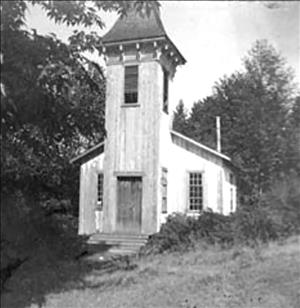On July 13, 1857, the recently organized Slaughter County is renamed Kitsap County to honor Chief Kitsap, a Suquamish military leader. The county seat is at Port Madison and will remain there until 1893, when it will move to Port Orchard.
Under Washington Territory, the Kitsap Peninsula was in King and Jefferson counties. To feed the need for lumber in California, mills and communities grew up at Port Orchard, Port Gamble Bay, Seabeck, and Port Madison. Because the mills attracted cash for their cut lumber, the area had the highest per capita income on Puget Sound. In order to transact official business, residents had to travel either to Seattle or to Port Townsend by canoe or boat.
During the 1857 session of the Territorial Legislature in Olympia, the mill owners applied for their own county and the measure passed on January 17, 1857. The county encompassed the Kitsap Peninsula from Hood Canal to Puget Sound, including Bainbridge Island and south to Sawamish (Mason) County. Part of the legal description of the southern boundary includes, "...being a post at the foot of a bluff marked S. 9 and 16, T, 22N, R 2 E; also an alder ten inches in diameter marked S, 16, B.T., and a maple six inches in diameter marked S. 9, B.T." (Abbott, 89) Subsequent surveys clarified the county line where it met Mason County.
The legislators named the new county after U.S. Army Lieutenant William A. Slaughter who had been killed by Indians on the White River a little more than a year before. When residents gathered at Port Madison to organize the county government, they voted to change the name to Kitsap, after the Suquamish war chief who defeated marauding Haida Indians at Battle Point on Bainbridge Island and who constructed an immense cedar structure called Old Man House at Suqua.
The first courthouse burned down and in 1880, the commissioners moved into a former dance hall with a belfry (but no bell). The new jail was constructed across the street.
In 1892, the mill founded by George A. Meigs fell into bankruptcy and closed. Workers moved on to other employment and the once-thriving community atrophied. In 1893, the voters moved the county seat to Port Orchard.

